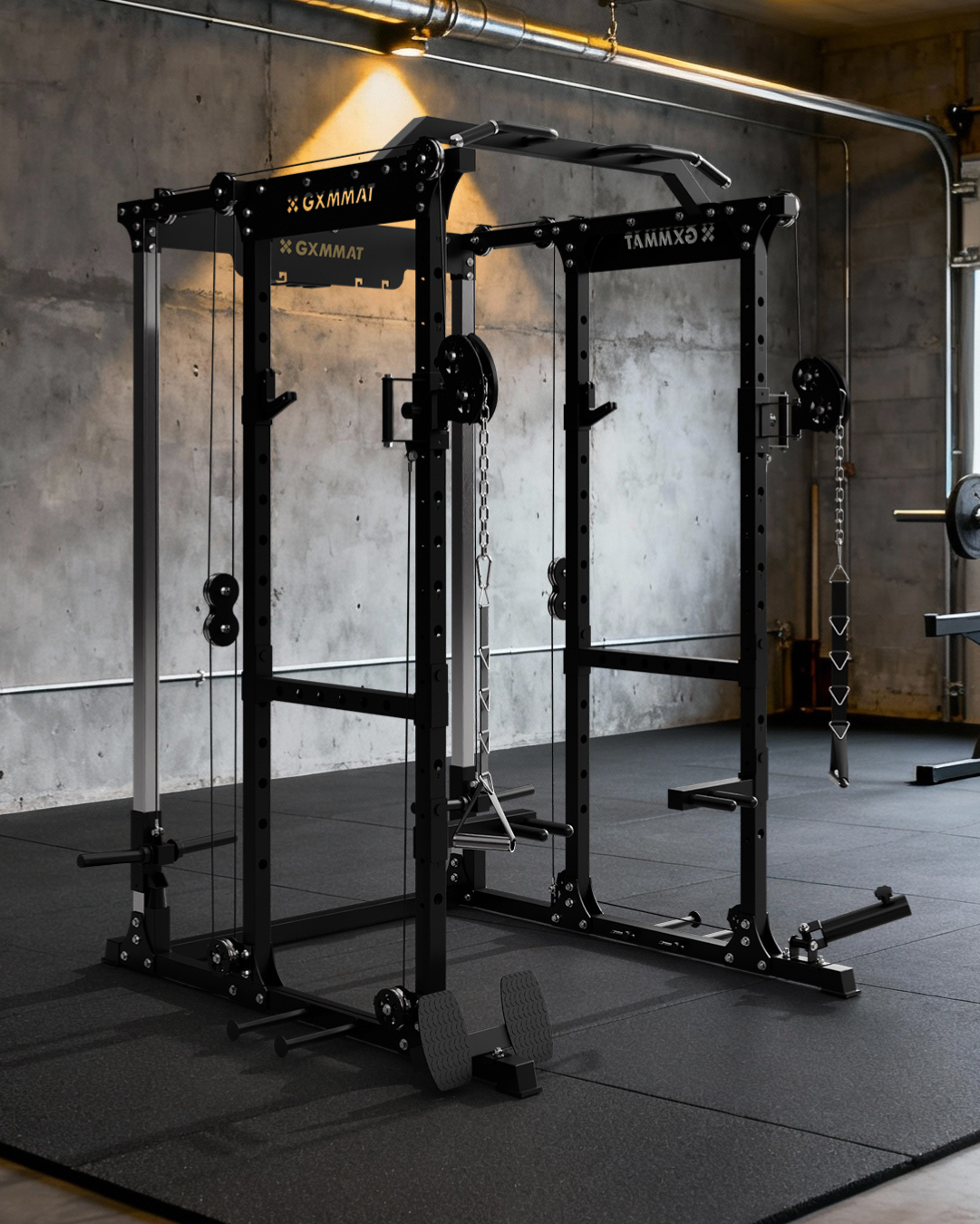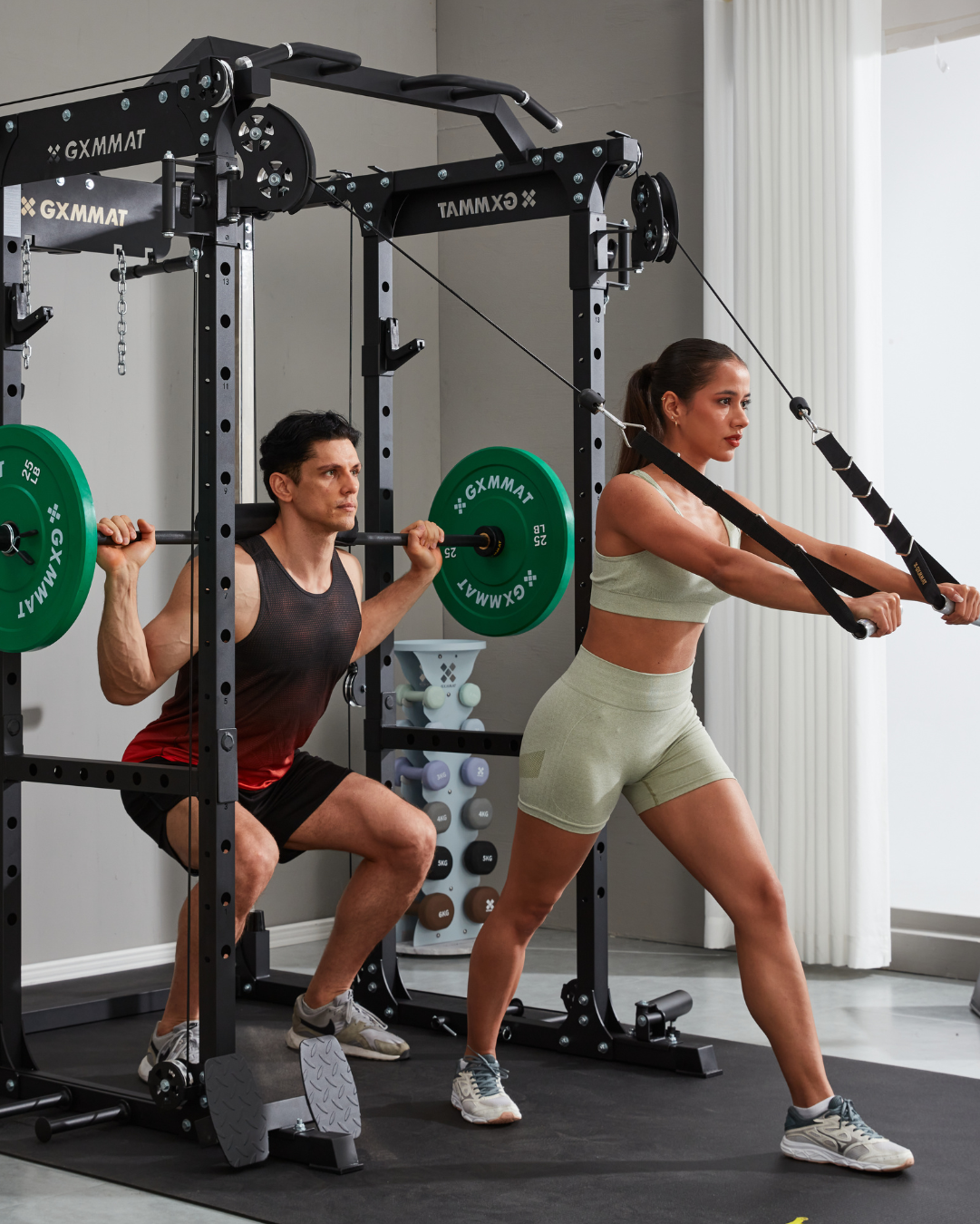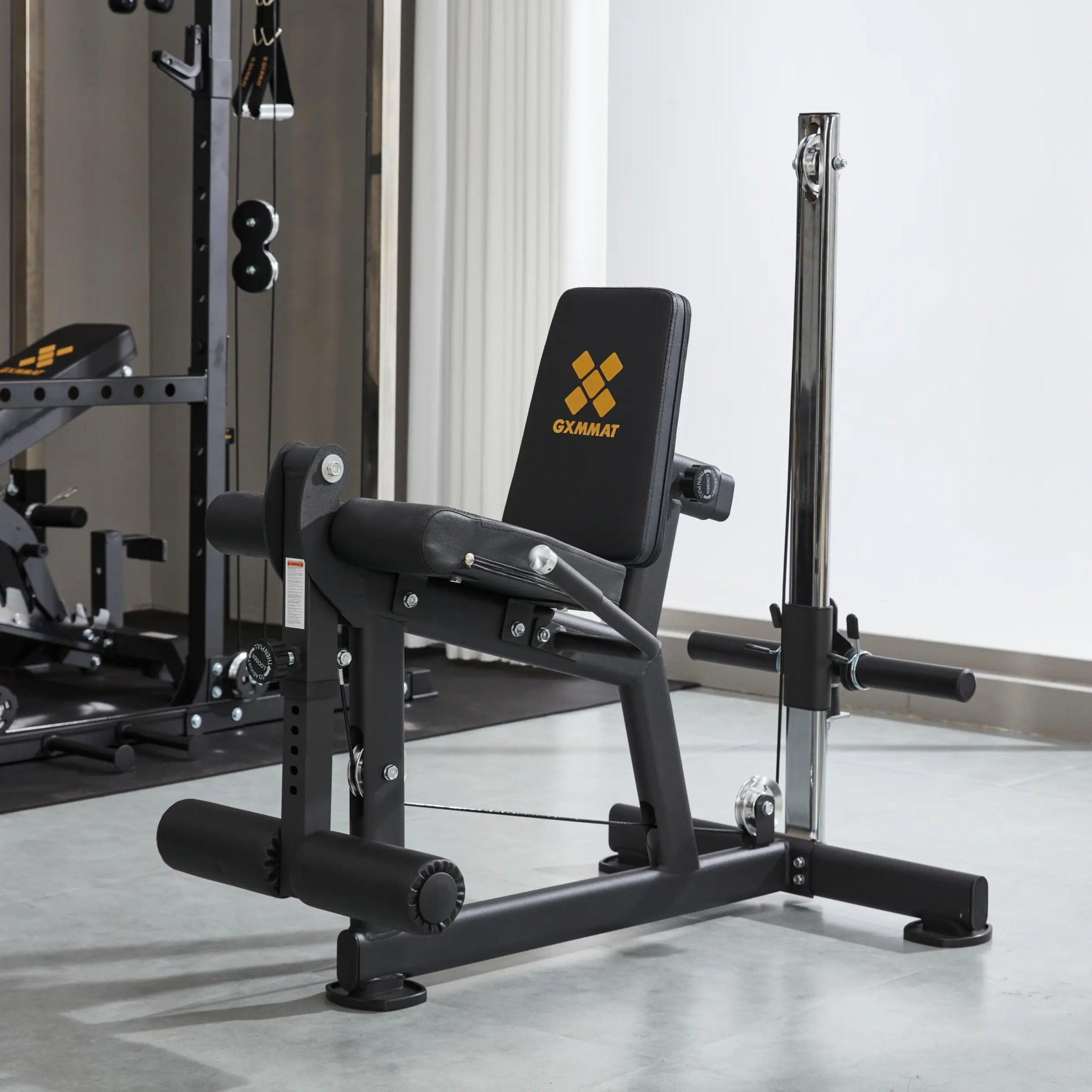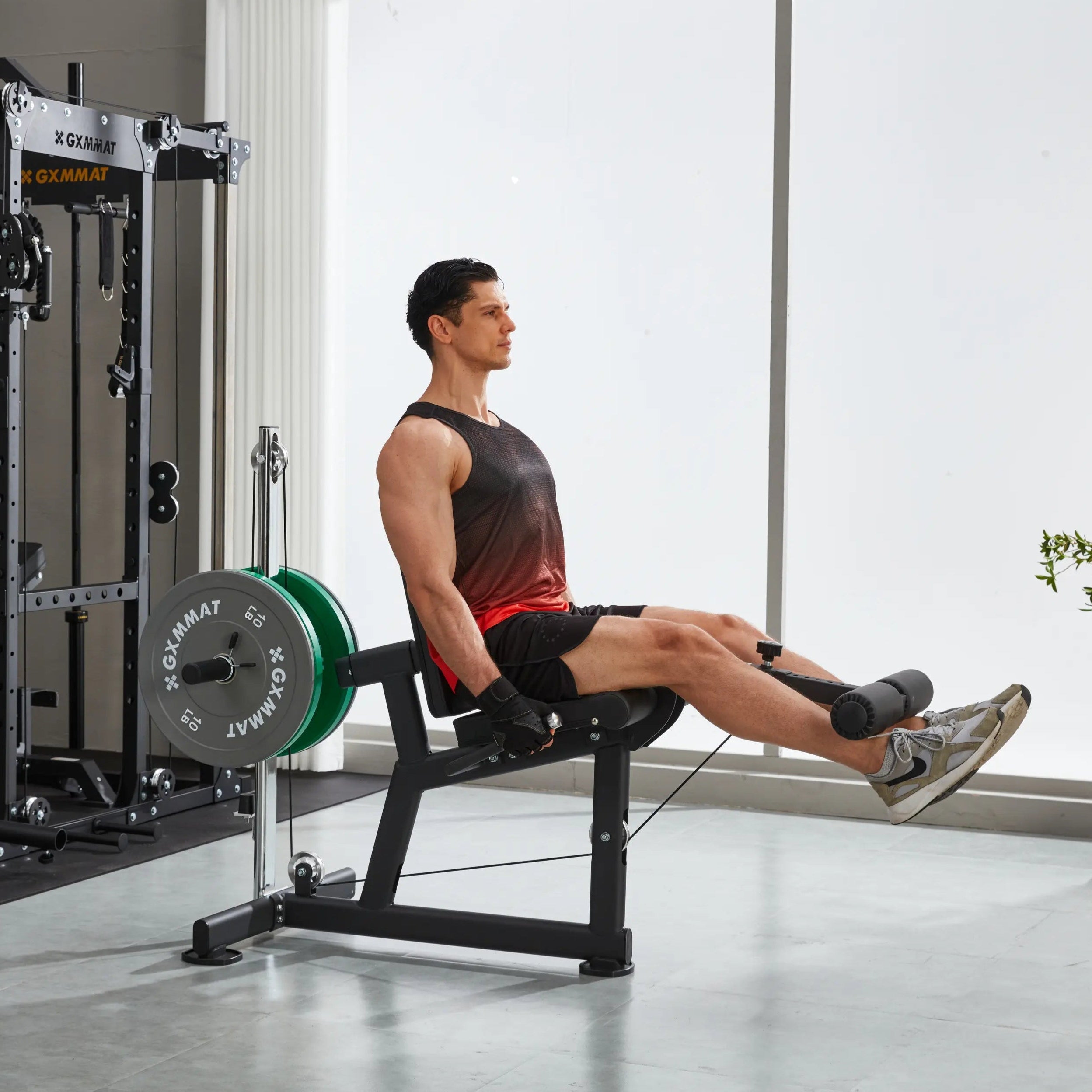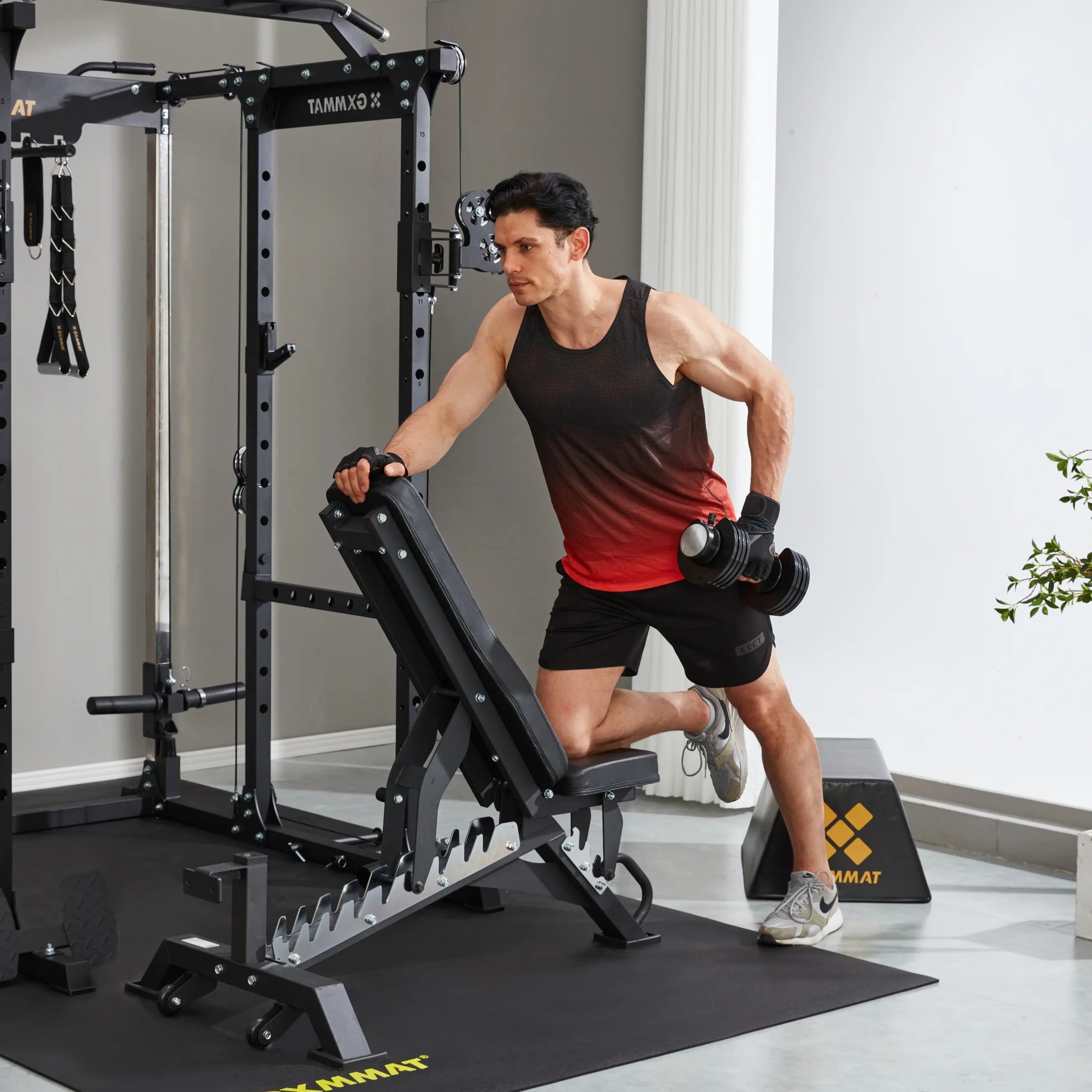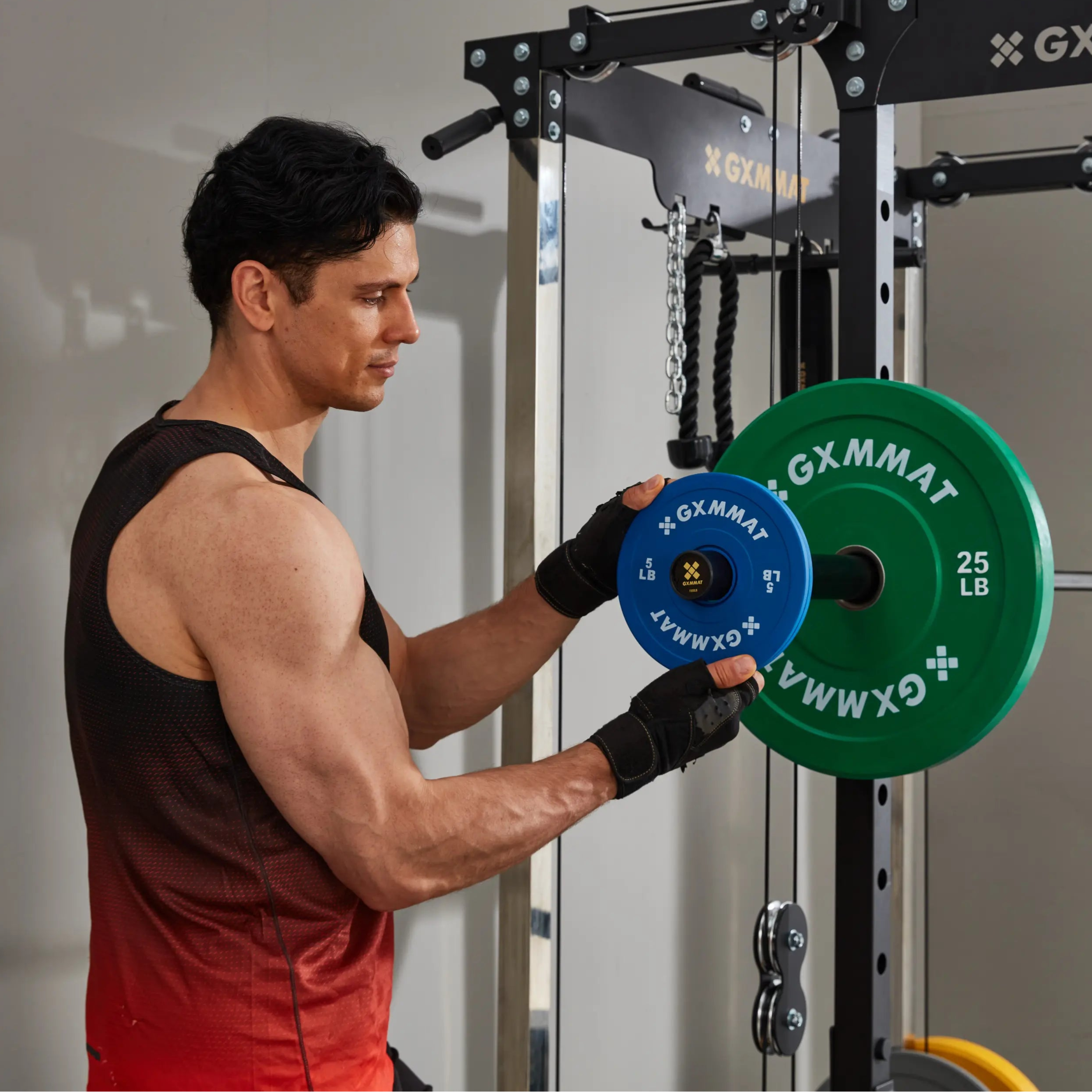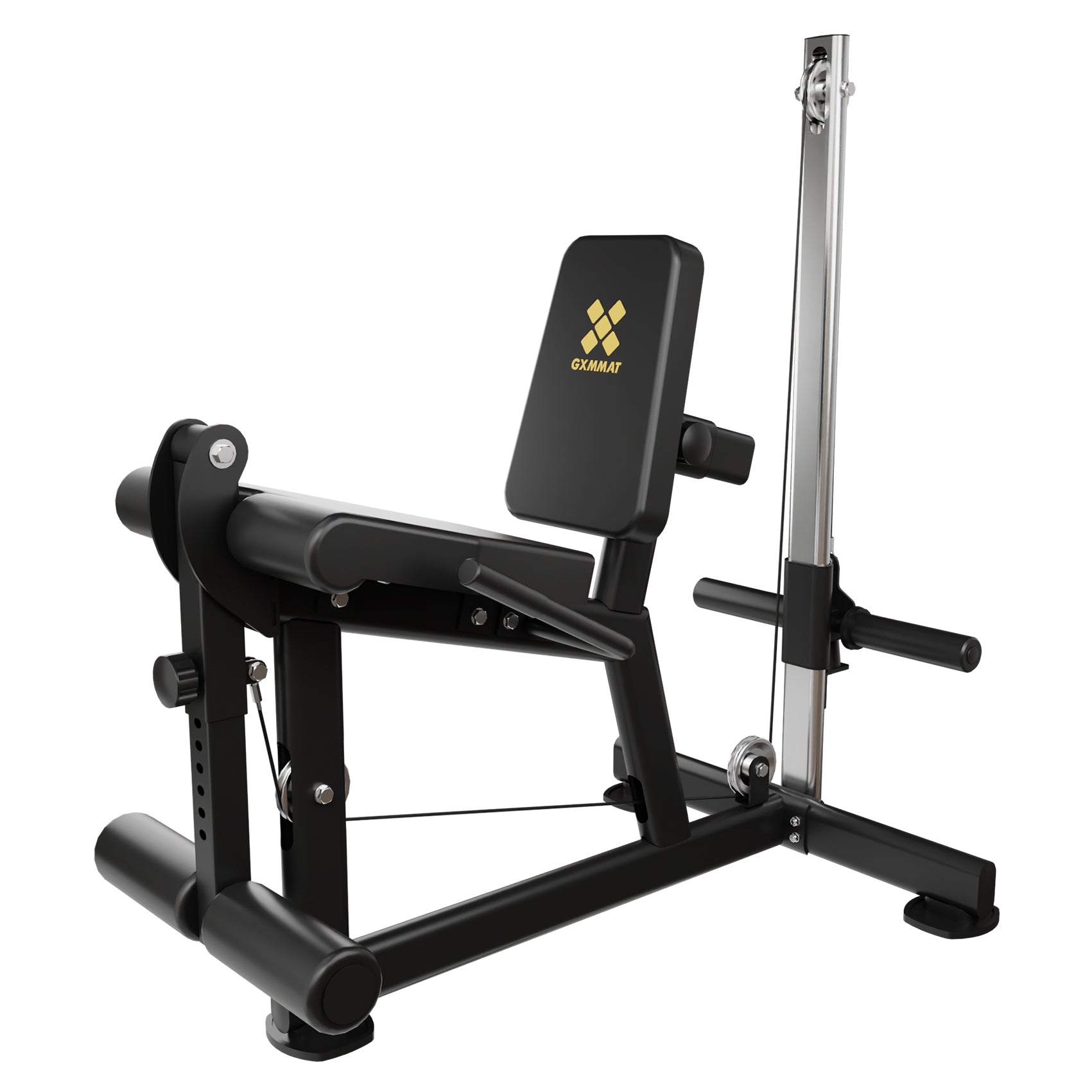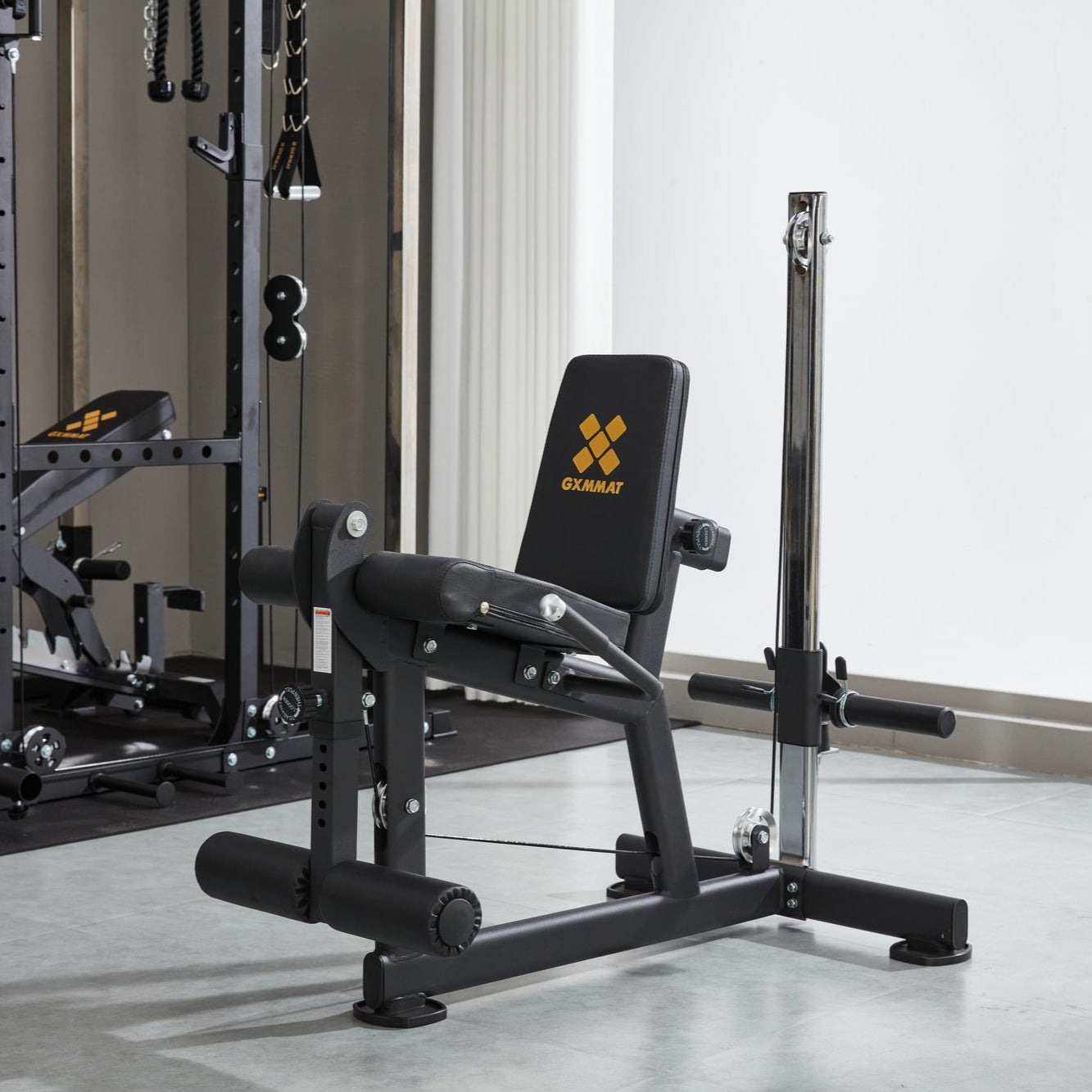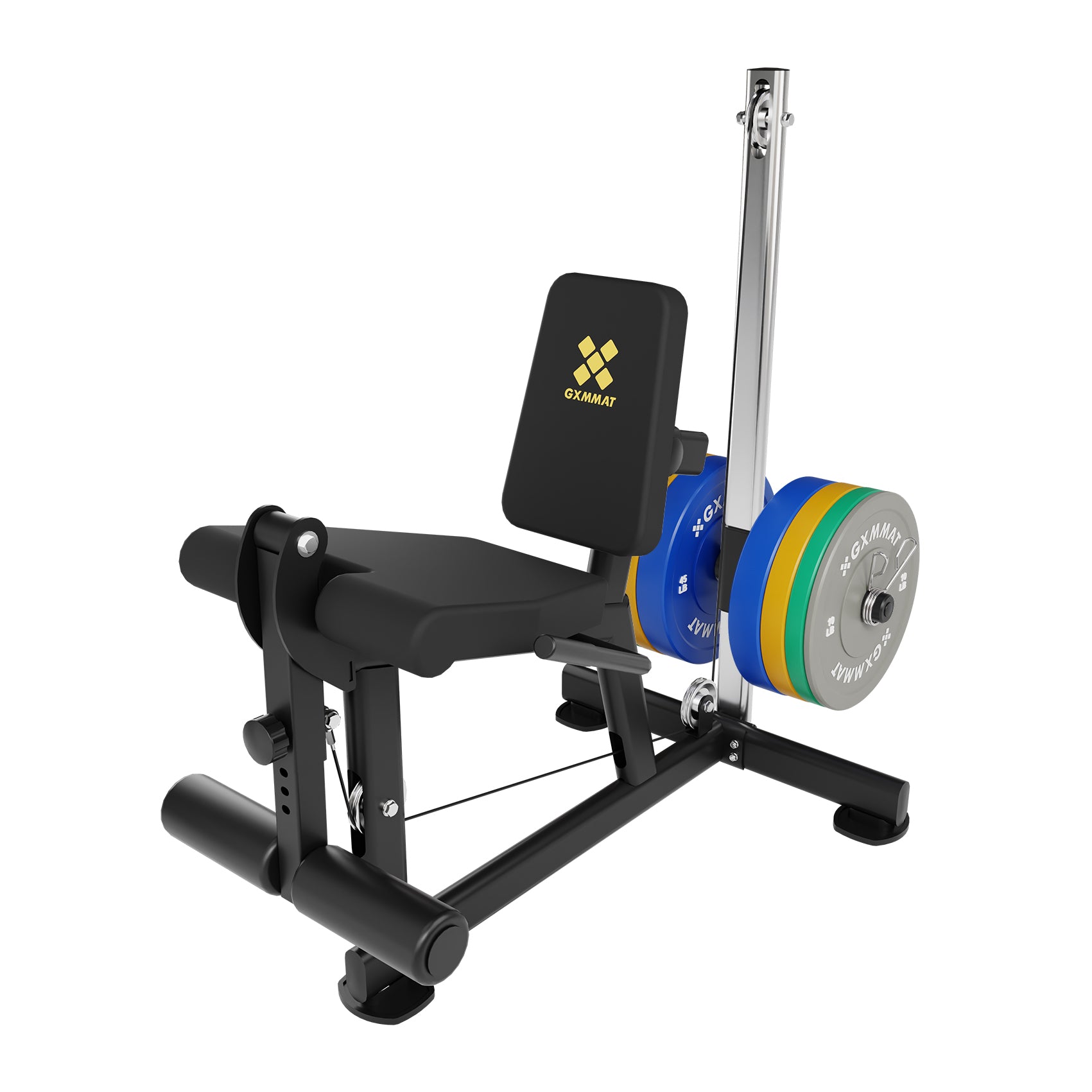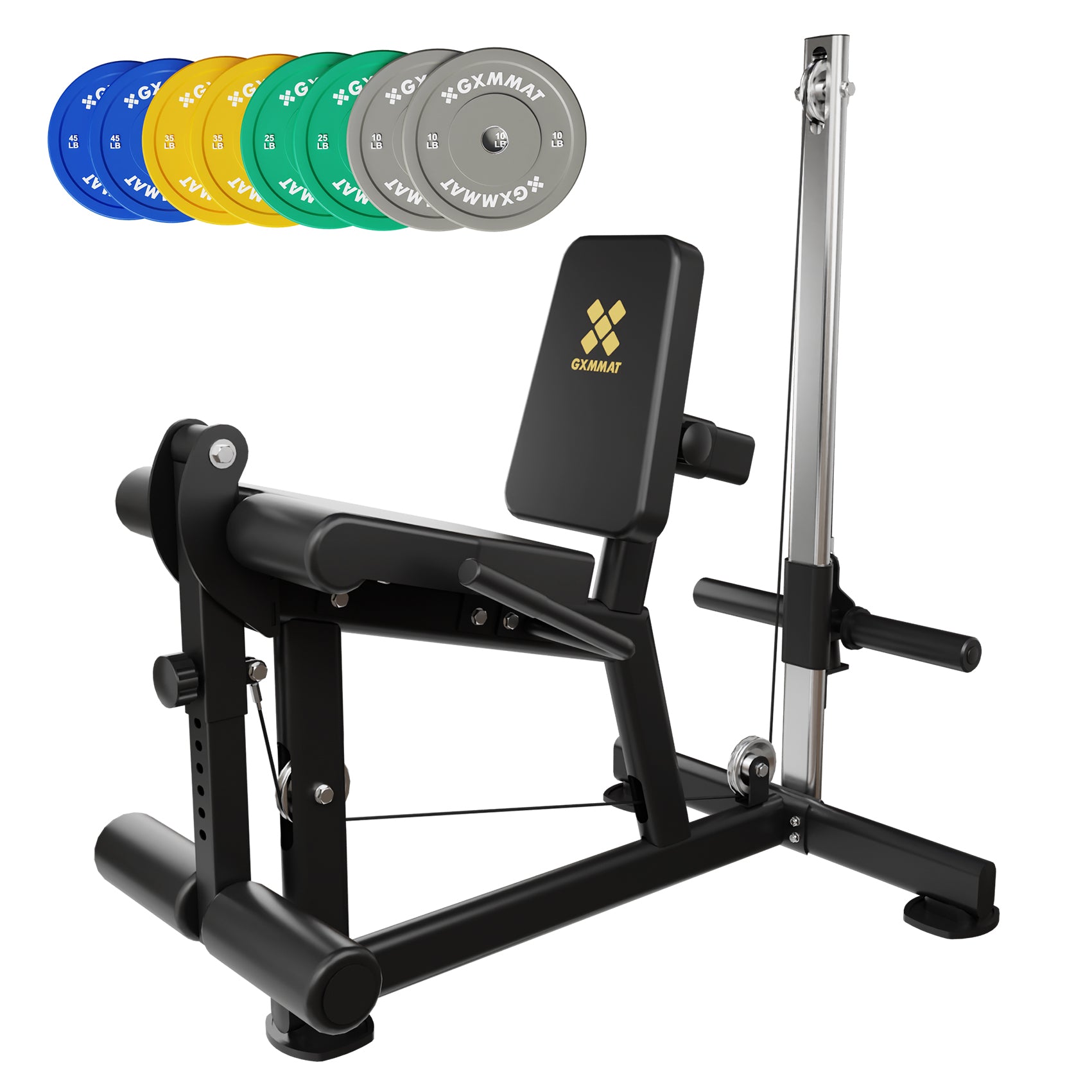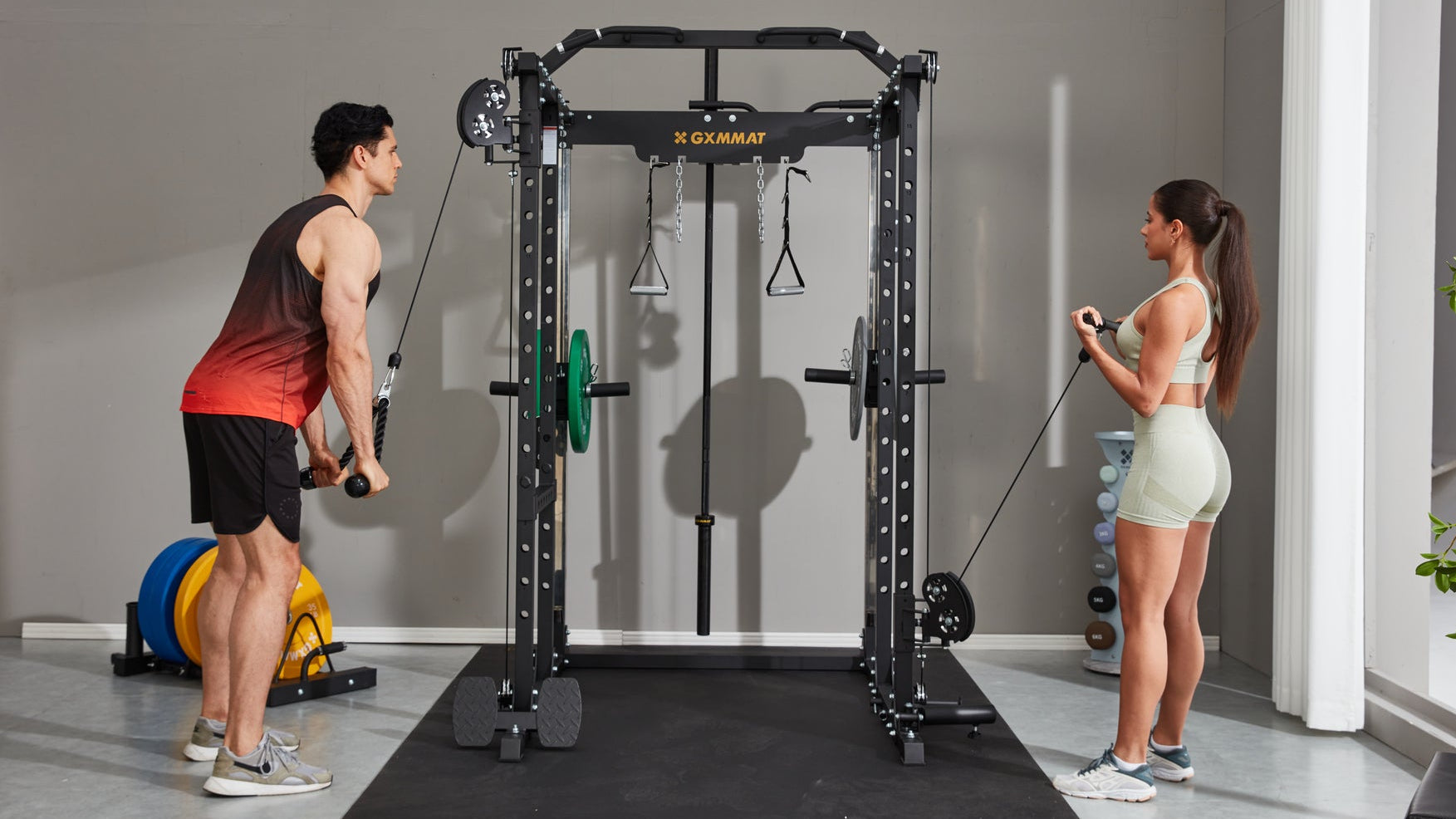
Leg Machine
2 products
Filters
Key Benefits of Lower Body Strength Training
It’s important to stay consistent with your lower body workouts since these leg muscles are an integral part of your overall fitness. Having a fit, strong lower body will create a stable foundation, which helps to create resistance that travels upward into your core and upper body, boosting your performance in sports and everyday life.
- Build Muscle & Tone – Engage major muscle groups including quads, hamstrings, glutes, and calves.
- Boost Athletic Performance – Strong legs translate to faster sprints, higher jumps, and better stability.
- Enhance Bone Health – Strength training helps increase bone density and reduce injury risk.
- Improve Joint Stability – Strengthens knees, hips, and ankles, reducing injury potential.
- Increase Metabolism & Burn Fat – Large muscle groups burn more calories during and after workouts.
- Everyday Functionality – Makes daily activities like climbing stairs, carrying groceries, and lifting easier.
Most Effective Lower Body Workouts
If you want to build lower body strength, start with compound exercises to engage the major muscle groups. Then use isolation movements to strengthen weak points or target specific muscles, and combine them with explosive and functional exercises to create balanced leg strength and enhance overall performance.
- Compound Movements (Multi-Joint Exercises): These exercises work multiple muscles at once and are highly effective for building strength, power, and muscle mass, including Squats, Deadlifts, Lunges / Walking Lunges, Hip Thrusts / Glute Bridges.
- Isolation Movements (Single-Muscle Focus): These exercises target specific muscles for shaping, strengthening weak points, or rehabilitation, including Leg Extensions, Leg Curls, Calf Raises, Abductor / Adductor Machines.
- Explosive & Functional Movements: inclduing Box Jumps / Plyometrics, Step-Ups, Belt Squats.
Difference Between Resistance Profile and Strength Curve?
"Resistance Profile" and "Strength Curve" are two commonly used concepts in strength training and exercise equipment design. Although they are related, they refer to different things. The resistance profile refers to the variation in resistance that a training machine provides throughout the entire range of motion. It reflects the force applied by the equipment to the muscles and can be adjusted through the design of pulleys, cams, or barbells. The strength curve, on the other hand, refers to the maximum force that human muscles can generate at different joint angles. It reflects the muscles' own capabilities and is related to the range of motion and joint position.
How To Choose Isolation Machines?
When selecting isolation machines, how can you choose an equipment that ensures more scientific and efficient training?
1. First, understand the natural strength curve of your target muscle. Each muscle produces different amounts of force at different joint angles—for example, the quadriceps are strongest in the mid-range of a leg extension, while the biceps generate the most force when the elbow is halfway bent. Therefore, it’s important to know the characteristics of the muscle you are training.
2. Compare the resistance profile of the equipment. If the machine’s resistance profile matches the muscle’s strength curve, the muscle will receive effective stimulation throughout the entire range of motion. If not, certain angles may have insufficient or excessive load. When trying out equipment, pay attention to whether the resistance feels smooth throughout the movement, especially at the start and end of the motion.
3. Prioritize adjustable machines. Equipment with adjustable height, backrest, leg pads, and handles allows you to modify your movement angles so that the resistance profile better aligns with your strength curve. For example, adjusting the leg pad on a leg extension machine can position the quadriceps in the most stretched state while still providing appropriate resistance.
4. Evaluate training efficiency. Machines whose resistance profile matches the strength curve allow every rep to effectively stimulate the muscle, reducing wasted effort. Machines that do not match may require additional single-leg or auxiliary exercises to compensate, which lowers overall training efficiency.
Center-powered vs One-sided Cam: Which Leg Extensions to Choose?
When choosing a leg extension machine, understanding the differences between center-powered and one-sided cam designs is crucial for optimizing your workout experience.
Center-powered machines feature a pulley system that drives resistance from the center of the machine. This design aims to provide a more consistent resistance profile throughout the range of motion, aligning better with the natural strength curve of the quadriceps. Such machines are often preferred for their smoother movement and more balanced resistance distribution.
One-sided cam machines utilize weights on one side, which can lead to varying resistance levels during the exercise. While these machines may be more cost-effective, they might not offer the same level of resistance consistency as center-powered models. Resistance may be greater on one side of the cam, and users may experience uneven tension.
If you want to achieve a consistent and natural resistance curve that matches the strength profile of your quadriceps, a center-powered machine is usually the better choice. If cost is an important factor and you’re willing to accept some variation in resistance, then a one-sided cam machine may be sufficient.
Frequently Asked Questions
What Muscles Do Leg Extensions Work?
The leg extension exercise primarily targets the quadriceps, which consist of four muscles located at the front of the thigh:
1. Rectus Femoris: located in the middle front of the thigh, it spans both the hip and knee joints. It assists in hip flexion and is primarily responsible for knee extension during the movement.
2. Vastus Lateralis: located on the outer side of the thigh, it helps extend the knee and maintains proper alignment and stability of the knee.
3. Vastus Medialis: located on the inner side of the thigh, it works together with the vastus lateralis to maintain knee alignment and stability.
4.Vastus Intermedius: located beneath the rectus femoris, it provides additional strength for knee extension.
Are Leg Extension Machine and leg Curl Machine the Same?
No, they are not the same. Leg extension machine mainly target the quadriceps on the front of the thigh, especially the rectus femoris. Quadriceps strength is crucial for jumping ability, explosive power, and landing stability. Doing leg extensions can further improve anterior chain strength and enhance performance in jumping and ball sports. Leg curl machine mainly target the hamstrings (including the biceps femoris, semitendinosus, and semimembranosus) on the back of the thigh. Strong hamstrings can increase posterior chain strength, protect the knee joint, and enhance explosive power and stride length, improving performance in deadlifts, squats, sprints, and weightlifting.
Why Choose a Cable Leg Extension Machine over A Plate-loaded One?
The cable leg extension machine provides consistent and stable resistance throughout the entire movement, reducing joint stress and better activating the muscles. In contrast, traditional plate-loaded machines may have uneven resistance, which can place more pressure on the joints or offer less tension at certain points-especially in the beginning range of the leg extension, where there is little to no load. Cable-driven machines effectively solve this issue. At the same time, GXMMAT leg extension machine features an innovative central cable with a back-mounted weight design, solving the problem of uneven resistance between two legs found in traditional single-side plate-loaded machines. The compact size makes it more ideal for home use.
How Much Weight Should I Leg Extension?
For beginners, men can typically start with around 60–80 lbs or use 40–50% of their bodyweight as a reference, while women can start with around 30–40 lbs or about 25% of their bodyweight. You can check the community average strength standards at Strengthlevel.
When selecting a weight, you should also pay attention to your maximum load and use the right Reps in Reserve (RIR). Beginners are recommended to keep RIR at 2–3 to avoid excessive fatigue. For example, if you plan to do 10 reps in one set, pick a weight you could perform for about 12–13 reps, leaving 2–3 reps in reserve. And if you find you can still do 7-8 extra reps after completing the set, that means the weight is too light and should be increased. Intermediate and advanced lifters can keep RIR between 0–2 to train close to failure and maximize results. Continuous experimentation will help you find the weight that works best for your body.
How to Use Leg Extension Machine Correctly?
1. Preparation: Adjust the backrest position so that your knees are placed directly in front of the seat base edge. Align your knees with the pivot point of the machine. The crease behind your knees should be close to the edge of the seat pad. And then rest the leg roller just above your ankles.
2. Lifting Phase: Slowly and steadily raise the leg roller upward and keep your upper body still. Make sure your hips stay in contact with the seat base, and your back rests against the backrest. Lean back a little, grip the handles, keep your hips down, and move only your legs throughout the motion.
3. Top Hold: When you reach the top of the movement, pause for one second at the peak and squeeze your quadriceps, but be careful not to hyperextend or lock your knees.
4. Lowering Phase: Slowly lower the leg roller back to the starting position.

